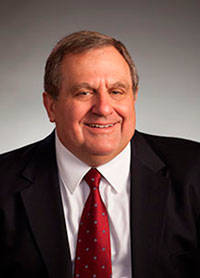Many years ago, a reporter asked George Weyerhaeuser, then CEO of Weyerhaeuser Co., why his company spent so much time and money informing its workers, public officials and people about its business of growing trees and converting those trees into lumber and paper products.
His answer was simple. “People need to know what we do and why what we do is important to them.” He believed if people and elected officials understood Weyerhaeuser, they would make thoughtful decisions based on facts.
To Weyerhaeuser, there was no other option. Logging, milling and managing forest lands are very visible to motorists and neighbors—-some of whom continue to have strong visceral reactions.
Weyerhaeuser and the forest industry went a step further. They took public concerns to heart and changed the way they managed their lands. Some of those modifications were costly and put lands off limits to logging. For example, trees and shrubs adjacent to streams would remain in their natural state to enhance water quality and fish habitat.
The industry’s initiative helped save its ability to stay in business. Over the years, other businesses have adopted similar approaches. BNSF is notable example.
Trains and tracks are also visible to motorists; impact our rural lands, cities and neighborhoods; and, often run along scenic rivers, lakes and seashores. People and those they elect to write laws and regulations want to know if trains and their cargo are safe and have the latest safety and environmental protections.
Just as the forest industry invests in public information programs, so have our railroads. BNSF recently hauled its fire suppression and safety equipment to its Vancouver rail yard. Its specialists gave interested citizens a hands-on tour.
On display was the latest technology to detect even the smallest crack in rails and quickly repair them. BNSF has over 4,000 trackside equipment detectors which monitor locomotives and railcars on a 24/7 basis. At risk train wheels and undercarriages are identified and immediately replaced.
The railroad utilizes high-speed laser technology to test track surface and alignment, uses x-ray technology to monitor the condition of rail ties, and ground penetrating radar to see if the ballast (rail bed) is weakened and needs replacement.
BNSF use drones to inspect hard-to-reach towers and tall bridges and installed Positive Train Control (PCT) which warns the crew of problems with speed and stops trains if needed.
Today, people care about climate change, especially CO2 emissions. Locomotives consume a lot of diesel. Railroads are actively working to lower fuel consumption and emissions.
The Association of American Railroads reports in 2017 alone, U.S. freight railroads consumed 732 million fewer gallons of fuel and emitted 8.2 million fewer tons of carbon dioxide than they would have if their fuel efficiency had remained constant since 2000.
Redesigned locomotives and rail cars now move one ton of freight over 470 miles on a gallon of fuel and account for less than one-percent of our nation’s total greenhouse gas emissions.
Just as the forest industry is a major employer and economic driver in Washington, so are BNSF and Union Pacific—the nation’s two largest railroads. Together, they employ 4,300 people in our state who are well paid with good benefits. The combined yearly payroll is over $363 million.
The bottom line is the private sector must tell us its story and how it fits into our nation’s ability to innovate, generate jobs and provide the goods and services we need every day. Otherwise, move over and allow government to take control.
Sitting on the sideline and letting others define business is “not an option” if our market-based enterprise system is to flourish in the years ahead.
Don C. Brunell is a business analyst, writer and columnist. He retired as president of the Association of Washington Business, the state’s oldest and largest business organization, and now lives in Vancouver. He can be contacted at theBrunells@msn.com.


